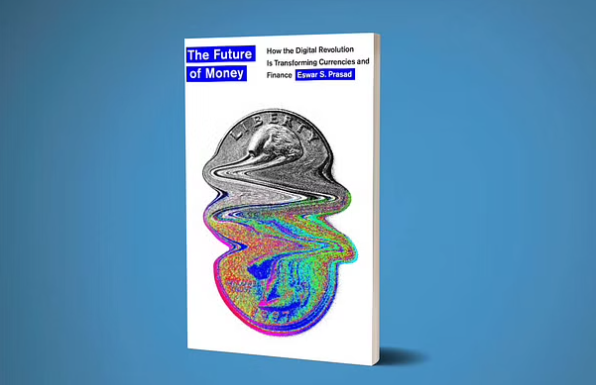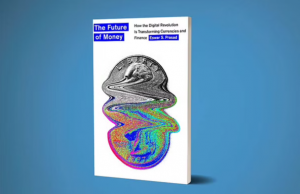Join Our Telegram channel to stay up to date on breaking news coverage
When it comes to cryptocurrencies and their ability to impact finance, there’s a lot of debate available.
Eswar Prasad, in his book The Future of Money: How the Digital Revolution Is Transforming Currencies and Finance, presents his views on cryptocurrencies and their impact on social, economic, and political factors in economies.
He provides a broader context on the digital innovation that has taken place in finance in the past decade. With the development that digital developments have already brought and where it is heading, it is an interesting take.
Let us find out more about Eswar’s views on CBDCs, cryptocurrencies and the disruption that lies ahead.
Who is Eswar Prasad?
Eswar Prasad has penned various books in the past. In a well-accomplished career, he has also been associated with some of the best institutions in the world.
Eswar is the Tolani Senior Professor of Trade Policy at Cornell University and is also a Senior Fellow at the Brookings Institution, where he holds the New Century Chair in International Economics and is also a Research Associate at the National Bureau of Economic Research.
He previously held the position of chief at International Monetary Fund’s Financial Studies Division and headed IMF’s China division too.
His speeches and research have been cited in some of the most popular publications in the world, including the Economist, Financial Times, Forbes, New York Times, and the Wall Street Journal, among others.
Eswar’s Views on the Future of Money
“For all the digital innovation in finance in past decades, we are standing on the precipice of what may be even more dramatic change,” states Eswar.
The book is an interesting read and cites various implications of the previous few years’ developments in finance.
From the growth of mobile money in China and East Africa to microinsurance, the fintech space is finally adopting technology and making it more accessible for everyone, irrespective of their geographic location or socio-economic indicators.
Prasad further goes on to describe Ethereum and Bitcoin as the underlying factors behind shaking up the finance sector. However, their actual use cases are something that can do with some improvement.
On the central bank-issued digital currencies (CBDCs), Prasad is of the view that further development and innovation can allow them to be used as a backstop for private payments and further boost financial inclusion while having a rulebook in the form of a monetary policy, leading to lesser loopholes.
The risk behind not capitalizing on the existing banking system, lack of privacy, and a clearly stated regulatory framework is a larger risk to the future of finance. A proper design and legislative structure can help mitigate these risks, as per Prasad.
The book also throws light on certain impressive use cases of cryptocurrencies, including projects such as the e-krona and Venezuelan Petro.
Being an international macroeconomist of such stature, Prasad closely understands the implications of fintech and CBDCs on cross-border payments and how US dollars can serve as a reserve currency.
Your capital is at risk.
CBDCs as the future of cryptocurrencies?
The book’s insights and special concerns over the implementation and proper planning of CBDCs to integrate them with cryptocurrencies are interesting.
Prasad also states that since Central Banks around the world have the authority to make choices around tomorrow’s money, issuance and non-issuance of CBDCs are conscious policy actions that are to be considered. Moreover, to make a choice, a dialogue with the public seems necessary.
The book’s views somewhat align with the government’s concerns with cryptocurrencies around the world. The degree of anonymity and portability makes them the perfect ingredient to be used by the bad elements of society.
Regulations around cryptocurrencies seem varied around the world. While some governments are willing to embrace cryptocurrencies, others are simply going ahead and banning them. In such a scenario, CBDCs comes as a solution that caters to both sides of the spectrum, i.e. limit traditional finance risks without coming hard on innovation.
One of the most interesting ways to implement CBDCs seems for the users to have their accounts directly with the central bank. This would allow Central Banks around the world creative ways to manage money- such as in the form of stimulus payments, etc.
While there’s no doubt about CBDCs increasing the overall acceptance of cryptocurrencies, it is yet to be seen how it plays out.
Read More
Join Our Telegram channel to stay up to date on breaking news coverage


